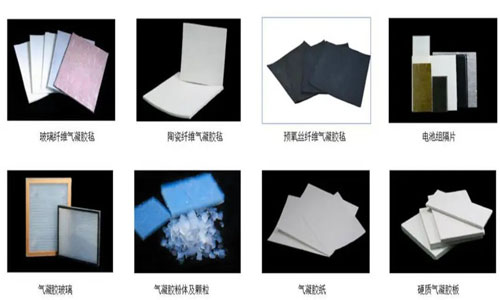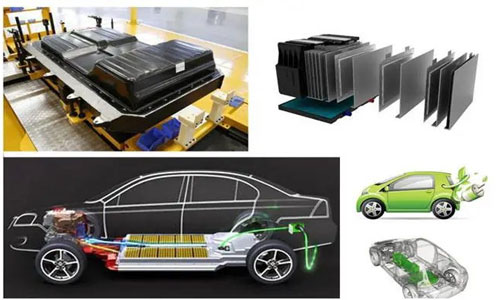Silicone sponge foam, as a key material for sealing, cushioning, and thermal protection in new energy vehicles, plays a vital role in enhancing their performance and safety.
The silicone sponge foam acts as a reliable sealant, effectively preventing the leakage of fluids, such as coolant and lubricants, in the vehicle's battery packs, motor compartments, and other sensitive areas. It ensures the integrity of these components, optimizing their functionality and extending their lifespan.
Moreover, the cushioning properties of silicone sponge foam provide excellent shock absorption, reducing the risk of damage to sensitive electronic components during vehicle operation. It helps to minimize the impact of vibrations, impacts, and sudden movements, enhancing the overall safety of the vehicle.
In addition to sealing and cushioning, silicone sponge foam also offers remarkable thermal protection. It serves as a reliable insulator, effectively preventing heat transfer between different vehicle components. This insulation capability helps in maintaining optimal operating temperatures, protecting sensitive electronics and battery cells from extreme heat or cold conditions. It improves the overall efficiency and lifespan of the vehicle's electrical systems.
Overall, silicone sponge foam is indispensable for new energy vehicles, providing a durable, flexible, and high-performance solution for sealing, cushioning, and thermal protection. It ensures the smooth and reliable operation of various components, contributing to the advancement of the automotive industry towards sustainable and energy-efficient transportation options.
Silicone foam padding (also known as silicone foam or foamed silicone) is a type of porous, low-density, compressible polymer elastomer made from raw materials such as silicone rubber, fillers, vulcanizing agents, and foaming agents. It is manufactured through a special process at high pressure and high temperature. With its high elasticity similar to silicone rubber and the sound insulation and shock absorption properties of foam materials, silicone foam padding is widely used in various applications, including vibration damping pads, sealing gaskets, sound absorption materials, insulation materials, and thermal insulation materials for aerospace companies. According to the structure of the foam cells, silicone foam padding can be classified into closed-cell, open-cell, and hybrid types.
Closed-cell silicone foam padding possesses excellent characteristics such as shock absorption, sound insulation, thermal insulation, flame retardancy, and explosion-proof properties. It is mainly used in the automotive industry for thermal insulation foam pipes in automotive air conditioning systems, automotive shock absorption, and foam silicone sealing gaskets for new energy vehicle batteries. Many interior materials in vehicles, such as flooring, ceilings, steering wheels, and car seats, are made of polyurethane foam materials. This is mainly because polyurethane foam materials have mature technologies and meet the required standards, as well as their relatively low cost. However, polyurethane foam materials have poor weather resistance, are flammable, and release a large amount of toxic gases harmful to the human body during combustion. Therefore, as the awareness of silicone foam padding increases and its promotion spreads, silicone foam padding is expected to replace traditional polyurethane foam materials.
Thermal insulation silicone gel is made from raw materials such as alkali-free ultrafine glass wool, room temperature vulcanized silicone rubber, fumed silica by gas-phase method, iron oxide, and hydroxyl silicone oil.
Silicone gel thermal insulation and cushioning frame products have the functions of cushioning and thermal insulation and can be used in the field of thermal protection for lithium batteries in new energy vehicles.

Application of silicone foam padding in the power battery of new energy vehicles:
Characteristics of silicone foam padding:
[1] Density of silicone foam padding:
The density of the silicone foam padding base is 1.17 g/cm3. However, through foaming treatment, the density of organic silicone foam padding materials produced by current mature processes can be as low as 0.16-0.20 g/cm3, making it suitable for components such as car seats and headrests. Conventional organic silicone rubber foam materials (density of 0.45 g/cm3), on the other hand, are widely used for filling gaps in sealing and shock absorption in various parts.
[2] Flame retardant performance of silicone foam padding:
Based on scientific experimental data, silicone foam padding with flame retardants added has excellent flame retardant performance, reaching the UL94-V0 level. When applied to electric vehicles, problems caused by combustion can be effectively reduced.
[3] Electrical insulation performance of silicone foam padding:
With the increase in the amount of physical fillers, the volume resistivity and surface resistivity of silicone rubber tend to decrease, while the dielectric constant and dielectric loss factor tend to increase. It can be seen that the addition of physical fillers to some extent impairs the electrical insulation performance of silicone rubber.
Application of silicone foam padding in the electric vehicle industry:
The battery is the source of energy for pure electric vehicles. The safety hazards of batteries seriously affect the safety of the entire vehicle. During operation, the battery generates heat and undergoes thermal expansion and contraction at different temperatures, causing a certain degree of expansion between battery cells. This long-term friction can lead to battery damage, rendering the charging battery ineffective, or even uncontrollable in severe cases. Additionally, when the output voltage of the battery pack exceeds 200V, it is necessary to ensure the sealing and waterproofing of the charging battery shell to prevent circuit short circuits due to water infiltration. The waterproofing level of the charging battery shell must meet IP67 requirements.

Application of silicone foam padding in the power battery of new energy vehicles:
Silicone foam padding has the characteristics of high compressibility, low shrinkage, good shock absorption and flame retardancy (UL 94 V0 level) throughout the entire charging and discharging process of the battery, providing excellent durability. It also has good waterproof performance and the following features, making it widely used in the thermal insulation and sealing of new energy battery cells.
1. Stable performance of silicone foam padding at different temperatures, ensuring consistent sealing performance.
2. Excellent waterproof sealing, preventing water leakage during outdoor use.
3. Minimal shrinkage damage over the long term, possessing the ability to resist shrinkage deformation.
4. Excellent flame retardant performance, effectively preventing risks caused by thermal effects during battery operation.
5. Thickness and strength can be designed according to different standards. The sealing ring must have good compatibility with the casing and low internal stress, effectively avoiding bending and arching of the sealing ring.
The working principle of using thermal conductive silicone gel sheets in the application of lithium batteries in new energy vehicles is to paste a thermal conductive silicone gel sheet on the top and bottom of the battery pack to direct the heat to the outside aluminum casing, controlling the temperature difference within 5℃ in the entire battery module. This extends the lifespan of the battery pack and increases stability during driving.
Filling the gap between batteries and between batteries and pipes with thermally insulating and thermally conductive silicone gel sheets can achieve the following effects:
1. Changing the contact form between batteries and heat dissipation pipes from linear to surface contact.
2. Facilitating the temperature equalization between individual batteries.
3. Enhancing the overall heat capacity of the battery pack, thereby reducing the average temperature.
Contact: Pamela
Phone: +86 189 6365 3253
E-mail: info@industryprocess.com
Whatsapp:+86 189 6365 3253
Add: Yajing Industrial Park, No. 59 Shuangjing Street, Weiting Town, Suzhou Industrial Park
We chat
